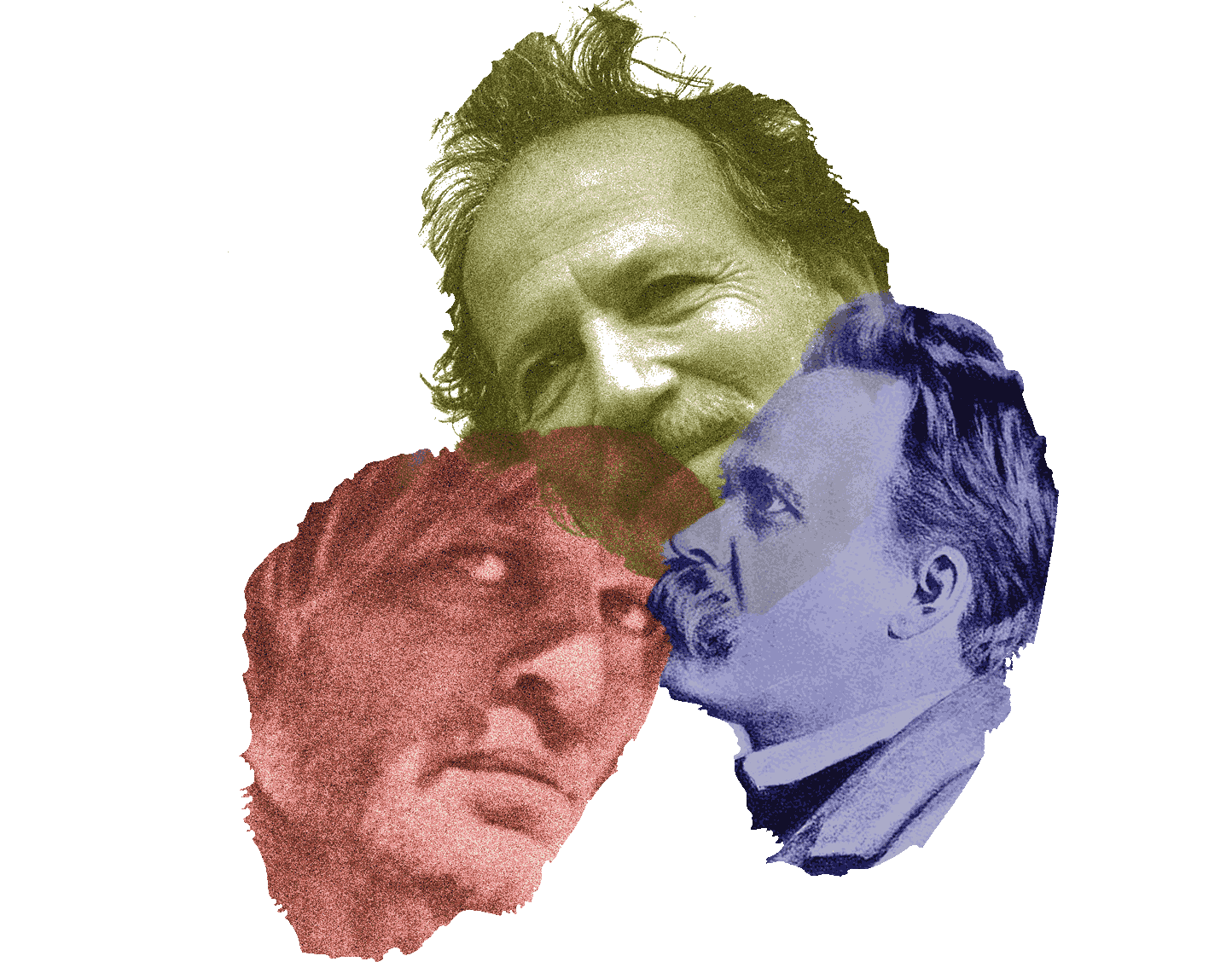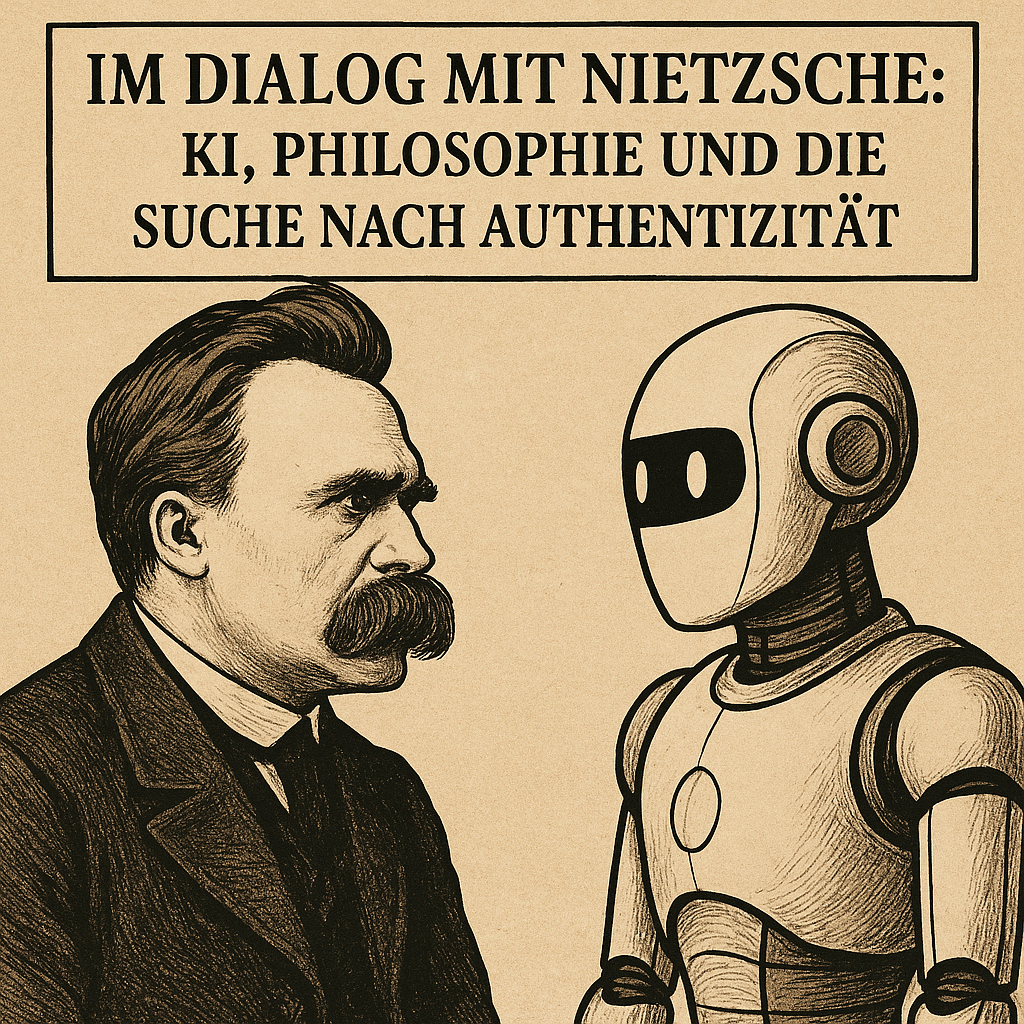The Barbarians of the 21st Century
Narcissism, Apocalypse, and the Absence of Other
The Barbarians of the 21st Century
Narcissism, Apocalypse, and the Absence of Other


The diagnosis of our time: not heroic barbarians, but selfie warriors. This essay, which won the second place at this year's Kingfisher Award (link), explores Nietzsche's vision of the”stronger type”1 and shows how it is turned into its opposite in a narcissistic culture — apocalypse as a pose, the Other as a blind spot. But instead of the big break, another option opens up: a “barbaric ethic” of refusal, of ambivalence, of relationship. Who are the true barbarians of the 21st century — and do we need them anyway?
I. The Barbarian As a Figure of Thought Between Criticism and Projection
In the history of culture and ideas, the term “barbarian” is a semantic hinge between demarcation and expectation, between identity creation and transgressive wishful thinking. In his later writings, Nietzsche gave the term a future-oriented function: The coming barbarians should not only be destroyers, but also carriers of a new strength, a regenerative cultural power. But what does this vision mean, how can it be interpreted in light of current social, political and psychological phenomena such as populism, a culture of self-expression and anti-intellectual movements?
Nietzsche's rhetoric, which is often regarded as prophetic, has a problematic tendency: The longing to “overcome” the present can itself be an expression of powerlessness and a lack of ability to adapt. The idea of radical break then replaces concrete criticism and power of action with an aestheticized apocalypse. This must be critically analysed.
The term Bárbaros Etymologically comes from ancient Greek: “Bar-bar” imitated the language of the non-Greeks. The barbarian was therefore the linguistic stranger who stood outside the cultural order. This linguistic difference gradually developed into a moral and civilizational evaluation: The barbarian became the uncivilized, the threatening, the opposite of the “we.”
This historical semantics is the origin of a structure of collective identity formation through demarcation. The barbarian serves as a negative foil through which a cultural “we,” a group identity, can be constituted. This dichotomy between the own and the foreign, internal and external, is still evident today in political discourses, such as in nationalist, anti-intellectual and populist movements. As Giorgio Agamben and Achille Mbembe have already analyzed, the figure of the barbarian is a biopolitical marker that organizes exclusion, legitimizes violence and makes the state of emergency the norm.2
II. Nietzsche and the Ambivalence of the Barbaric
Nietzsche places the concept of barbarian in a different context. For him, the barbarian is not primarily the underdeveloped, but the unbroken. Especially in the estate and in the genealogy The barbarian appears as the bearer of a raw, unbridled will to power, which modern society has lost — through moralizing, resentment, and weakness.3 Who doesn't want to think of current presidents and despots, but also the celebrated self-presentation of their own special features on social media platforms? These barbarians of the 21st century appear to some of us as role models, as bearers of hope — but to others as warning signs. Regardless of which camp you belong to, this always creates a dialectic of delimitation.
But the longing for a cultural break, for a “stronger kind,” is not supported by a concrete theory of transformation. Rather, she flees (like Nietzsche did) into the imaginary of the break, which A priori that substitutes actual political and cultural work. The “barbarians” appear as saviors ex negativo: Its size is not designed, but hoped for. This philosophy of hope through rejection is ultimately a sign of philosophical helplessness, an apocalyptic longing for the other. But the realized dystopia of modern barbarism — visible in the narcissification of society, in threatening political gestures and in war — is neither strategically planned nor calculated nor expected: rather, it breaks over us as an unpredictable reality, grows out of complex dynamics of social development and escalates into forms that could neither be foreseen politically nor culturally in their scope.
III. The New “Barbarians”: Populism, Narcissism and Lateral Thinking
In the present, we encounter identity-creating associations that present themselves as barbaric — in the sense of Nietzsche. The lateral thinker movement, conspiracy groups or even the followers of Trump, Putin and other authoritarian populist tendencies who believe in a heroic epic pose themselves as resistance to decadence, elites, modernity. But they remain trapped in the logic of resentment. What they criticize is often not so much the system as their own marginalization within it.
In addition to loss of meaning, post-modern society is increasingly threatened by narcissistic self-infatuation that makes any alterity disappear. It seems that the radical “barbarism” that Nietzsche had hoped for has not occurred — instead, a soft-washed, performative version of the barbarian has prevailed: the narcissistic consumer who subordinates everything else to his self-actualization path.
Nietzsche diagnosed a culture in which the great stories dry up and the transcendental foundations collapse. As a response, he did not expect a retreat, but a new kind of person who is not guided by values but sets values. Today we see the opposite: Late-modern society is dominated by a The will to image pulled through. It is no longer about being, but about being visible. People stylize themselves as a brand that only works as long as it creates desire.
Here, Nietzsche's concept of self-overcoming is perverted: The focus is no longer on growth, on risk, but on a narcissistic self-affirmation that displaces everything else — in the sense of Byung-Chul Hans. In The expulsion of the other Han describes a society that systematically excludes the foreign, the unavailable, the irritating in order to maintain a narcissistically mirrored self. In this world, the other person is no longer a challenge or an opportunity for development, but a functional object: evaluated, used, eliminated.
The new barbarian is no longer a warrior. He acts as a curator of his own visibility. His weapons are filters, hashtags, and algorithms. This barbarism is quiet, smooth, affirmative — and radical in that. It is the barbarism of optimization, in which the other person, instead of being destroyed, disappears into insignificance. Relationships become projects, people become resources, intimacy becomes a commodity.
Han is talking about the neoliberal use of the other person. The Other no longer appears as a radical difference, as resistance, but is transferred into an economic structure through a network of control, evaluation and comparability. The new narcissism is not (only) pathological — it is systemic.
Nietzsche complained of a “softening”4 of humans. Today we have it with a liquefaction To do: Nothing stays, everything flows, everything has to perform. The barbarians of the 21st century don't come with the sword: they hold up the selfie stick. They do not destroy buildings, but spaces of meaning.
IV. Narcissistic Culture as a Nihilistic Continuation
One might be tempted to interpret this narcissistic culture as the exact opposite of Nietzsche's barbarians. But it is rather a consequence of the nihilism he described: When there are no longer any superordinate values, the ego becomes the sole measure. But what looks like liberation is in fact a new form of enslavement — a captivity within oneself.
Nietzsche's vision of great health, one affirmative existence, presupposes the other person: as resistance, as a border, as a dialogue partner. Narcissistic culture, on the other hand, only knows the echo. In narcissistic dynamics, the other is not integrated or surpassed — the other is reduced to its mirror function in such a way that it is eliminated. The current barbarism is therefore a barbarism of lack of relationship.
The narcissistic society is not only in the tradition of the Enlightenment, but also in its paradoxical disintegration. The emancipation of the subject has led to isolation. Social networks suggest connection but create isolation. The other person becomes a screen — his depth disappears. Proximity is simulated, while real encounters become impossible; constant visibility replaces subjectivity. People become the object of their own surveillance. The narcissistic look inward is no longer self-reflection, but a permanent scan for connectivity and recognition.
These movements are not creating a new culture. They don't call for self-overcoming, they're calling for projection. Their revolt is not a creative act; it is an expression of an inability to create. Self-empowerment is replaced by performative sacrifice, which is all too easily compensated with aggression and willingness to use violence.
The narcissistic self-presentation complex of “selfie culture” also shows an apparent subjectification, which, however, appears to be an expression of systemic powerlessness. The “Ich brand” is becoming a compensation strategy in a world without borders. However, this form of digital barbarism is not strong, but stale — a farce of authenticity.
Nietzsche criticizes the weakness of modernity, but at the same time absolutizes an inconcrete hope of a break. This dialectic results in a paradoxical relationship: The call for the “stronger kind” is an expression of the experience of not being able to design for oneself. The philosophy of superman thus becomes a philosophy of self-empowerment, which can only think of its own effectiveness through its contradiction. This voluntary task of acting competence can result in depressive solidification, in a passive-aggressive attitude of refusal towards the stranger, while at the same time idealizing the “other”, which allows identification, stranger, in fantasies of salvation.
Instead of in the mode of concrete practice, the contemporary barbarian conjurer also persists in an aesthetic of revolution. The productive power of philosophy is replaced by a mythology of rupture. Walter Benjamin called this “left-wing melancholy”: the adherence to revolutionary gestures without revolutionary effect.5
Nietzsche's idea of a “stronger kind” remains in the balance between overcoming fantasies and resignation of cultural criticism. The idea that “only barbarians can save us” is a refusal to adapt: The present is not thought of as formable, but as decadent, decaying, doomed to destruction.
However, a contemporary philosophy must be critiqued and be able to design. The view of the “barbaric” must not degenerate into a mythological figure, but must serve as a mirror: What do we lack that we long for destruction? Why do we think that strength that we no longer find within ourselves can only come from outside?
V. The Possibility of a New Barbarism: Transformation Rather Than Transgression
Instead of a return to violence or symbolic individualism, what is needed today is perhaps a radical rehabilitation of others. The “barbarian” of the present day could not be the one who destroys, but the one who refuses total instrumentalization — who embodies the other in his existence: unavailability, ambivalence, resistance.
A new barbarism would have to break the systems of evaluation. It should counter the narcissistic gaze with silence. Perhaps it is the weak, the ambivalent, the inadequate who would be able to make a new form of relationship possible today — not through power, but through presence. A “barbaric ethic” would then not be an ethic of violence, but an ethic of non-functioning.
The figure of the barbarian historically refers to exclusion, symbolic violence — and at the same time to the recurring hope of a new beginning. Nietzsche philosophically exaggerated this figure and turned it into a projection screen for overcoming modernity. But there is a double risk in this exaggeration: The renewal is being externalized — it should come from outside, in the form of the “other person.” And it is aestheticized — as a heroic act, as the pathos of rupture.
An ethics of transformation argues against this fractional thinking: It takes what exists seriously, not because it is good, but because it is real. Transformation doesn't start with violence. It starts with attention. It is a quiet, lengthy, conflictual process that allows irritation and withstands ambivalences. In contrast to the transgressive gesture, which disregards the law, transformation looks for other rules, for other ways of dealing with power, vulnerability, and responsibility.
Transformation means seeing the other person as an opportunity rather than as an obstacle. It means thinking of yourself as a relationship beyond presentation as a brand. And it means not numbing the pain of the present with the hope of a utopian future: The work of change can be started out of pain. It is no less radical than the revolution — but it is slower, deeper, and more lasting.
What we need today are not barbarians, but transformers: people who are ready to continue building with the ruins of modernity — without cynicism, without promises of salvation, with a sense of what is possible in reality. This requires not heroic break, but radical patience, not apocalypse, but cultural work. The real strength lies not in the fervor of revolution, but in the ability to persist — and in the art of not only hoping but also acting.
Marion Friedrich, born in 1973 in Germany, studied psychology in La Laguna (Spain) and then philosophy in Augsburg (Germany). In her doctoral studies at the University of Augsburg, she focused in particular on epistemological questions of neurophilosophy and noetic anthropology. Since 2007, in addition to her psychotherapeutic work, she has been teaching in her own humanistic practice at the University of Augsburg with a focus on epistemology, language philosophy, theories of emotion and artificial intelligence. Her current research interests include the philosophy of mind, AI ethics and the psychology of love. In 2024 she published the volume written together with Joachim Rathmann and Uwe Voigt Ego or eco? Narcissism and the ecological crisis with Reclam.
Sources
Agamben, Giorgio: Homo Sacer. Sovereign power and naked life. Frankfurt am Main 2002.
Benjamin, Walter: Collected Writings III. Frankfurt am Main 1991.
Han, Byung-chul: The expulsion of the other person. Society, perception and communication today. Frankfurt am Main 2016.
Ders. : psychopolitics. Neoliberalism and the new techniques of power. Frankfurt am Main 2014.
Mbembe, Achille: Critique of black reason. Berlin 2017.
The article image was created by the author using ChatGPT.
Footnotes
1: Subsequent fragments 1887 11 [31].
2: Cf. Agamben, Homo Sacer and Mbembe Critique of black reason.
3: See, among others Subsequent fragments 1885 34 [112] and On the genealogy of morality, Paragraph I, 11 and I, 16.
4: See e.g. Subsequent fragments 1887 10 [2].









